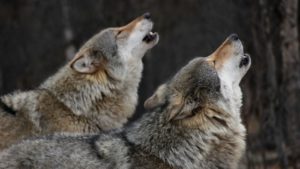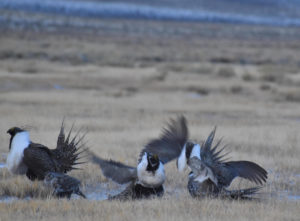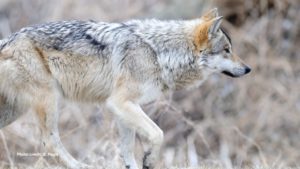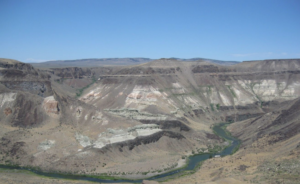
by Roy Heberger
Before my retirement from the U.S. Fish and Wildlife Service (FWS) in July 2000, I directed the wolf recovery program in Idaho. The work was the most rewarding, challenging, frustrating and stressful experience of my 33 years with the FWS.
To work closely with members and staff of the Nez Perce tribe was a fulfilling experience for me personally and professionally. I will always look back on my time working with the tribe with a certain degree of awe.
The participation of the Nez Perce’ in wolf recovery is the first documented case of a Native American people playing a key role in the recovery of a federally listed threatened or endangered species. The wolf holds spiritual importance to the Nez Perce, and the role of technical staff in wolf recovery efforts has been a key to the success of the program.
To meet people from all walks of life and of every political persuasion, lifestyle and viewpoint on wolves and wolf recovery gave me the opportunity to grow personally and professionally. There are more than two sides to the wolf issue. This became apparent from the exposure I had to various groups and individuals, from people who hated wolves to their core to those who revered them from their spiritual center. And there were a lot of folks and organizations in between.
I met Constitutionalists, secessionists, private property advocates, “wolf wackos” on the extremes, dedicated and effective pro- and anti-wolf advocates, ineffective people on the extremes, informed people, uninformed people, people who were mad, glad and sad, concerned people, disinterested people, apathetic people and scary people.
I am gratified that I had the chance to meet most of these folks, but also frustrated to a degree. The challenge was always there to make the program succeed, and biologically there is no question that it has in Idaho. Sociologically, we still have a long way to go. Change comes very slowly where people’s attitudes are concerned.
I don’t believe I ever tried to persuade a person to change his or her opinions or beliefs about wolves. For the most part I think this approach would have been futile. But I did try to present the facts about wolves and the recovery program at every opportunity. I tried to explain what scientific inquiry had contributed to our knowledge of wolves to date.
Something that tore me up inside was seeing good people so firmly believe that wolves would cause them physical harm. They were absolutely beside themselves with worry. The FWS had information and advice, but who was I – a not-to-be trusted federal employee – to calm those fears? I relied on the evidence. There is no documented case of a healthy, wild wolf ever attacking a human in North America.
I also met people who saw wolves as something almost mythical, beyond reality – my reality anyway. I’m talking non-aboriginal folks here. They are the people, who, when wolves have fully recovered, will be very upset to see state wildlife agencies treat the animals like any other form of wildlife: game, fur bearer or predator. Some element of population control is likely to involve harvest. I’m limited, I suppose – a biologist by training and experience. I can’t get to the mythical aspect of wolves, but that’s OK too.
To see real accomplishment in the recovery of wolves in Idaho was perhaps the most rewarding aspect of the program for me. I spent my career with FWS and feel firmly that we need to maintain wild habitats, natural communities, wild populations and species diversity to retain the delicate balance required for ecosystem stability. We don’t yet know the half of it ecologically. So we’d best tread lightly.

I loved my job with FWS until my last day of employment. So why did I retire at age 55? I simply had other things to do in this life before I arrived at “old age” – whatever that is.
I’m now enjoying other activities but manage to stay involved in wolf recovery and other facets of environmental activism, preservation and conservation of our natural environment. Wolf recovery was a very nice way to end a career. I am grateful to the FWS for the opportunities it gave me.
What’s next? I have many boats to build, flies to tie and places to see and experience. But I will always remain passionate about wolf recovery. I hope my grandchildren, while camping and backpacking with their families, will someday experience the howl of a wolf in Idaho’s great outdoors.
Roy Heberger, former coordinator of the wolf recovery program in Idaho, holds degrees in fisheries and aquatic ecology from the University of Michigan. Twenty-one of his 33 years with the U.S. Fish and Wildlife Service were spent in the Boise office of the agency. He continues to live in Boise, Idaho.
This article appeared in the Watersheds Messenger – Spring 2002 – (Vol. IX, No. 1)![]()
Check out WWP’s archive of our semi-annual publication, the Watersheds Messenger






